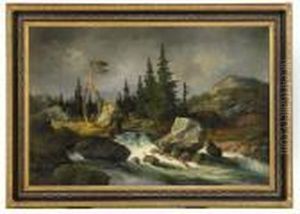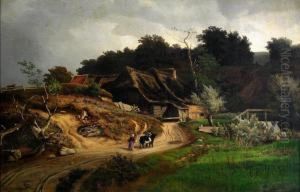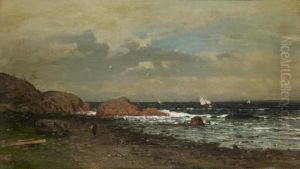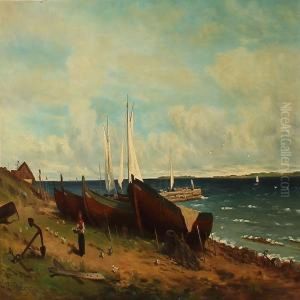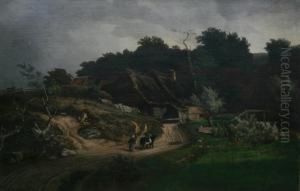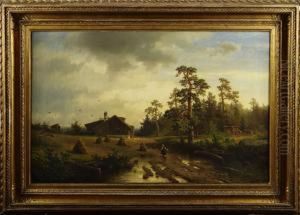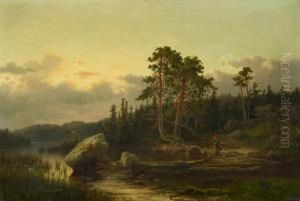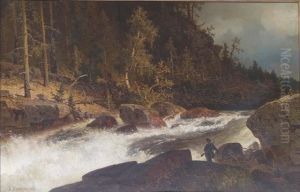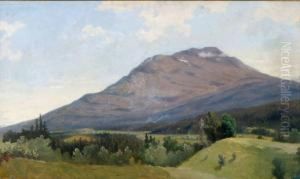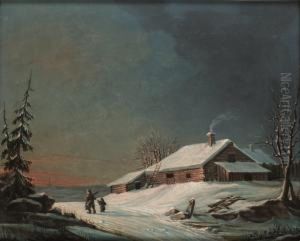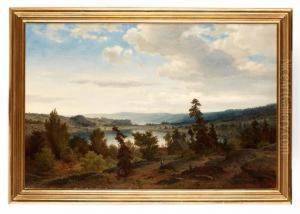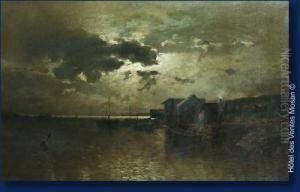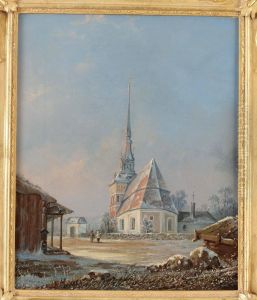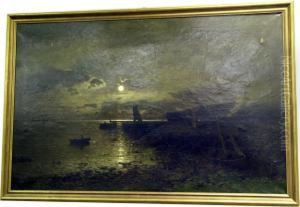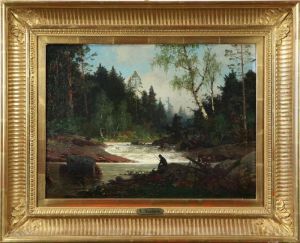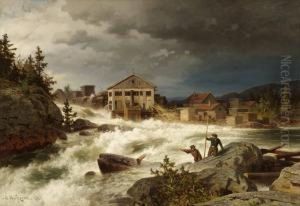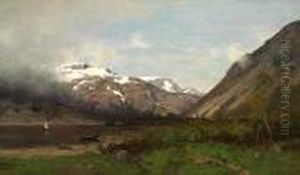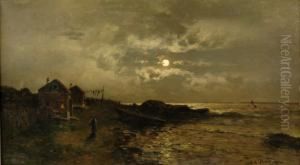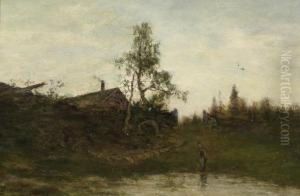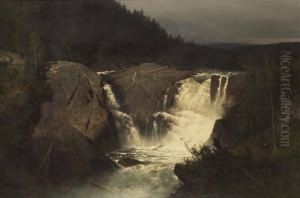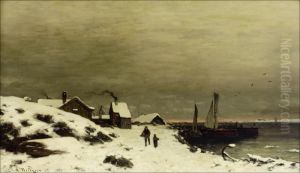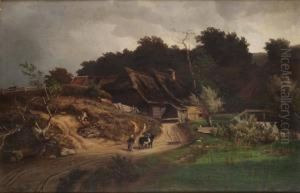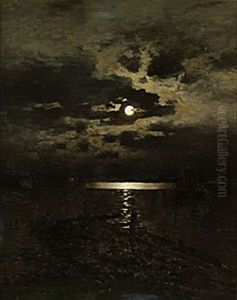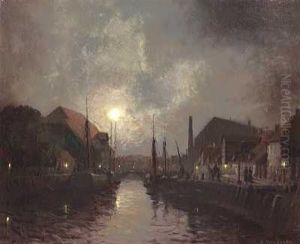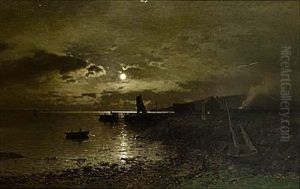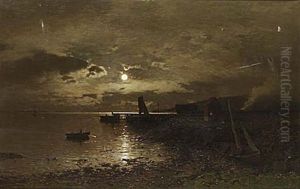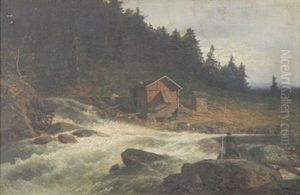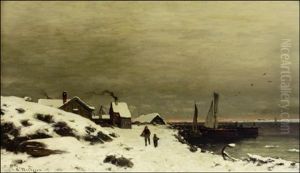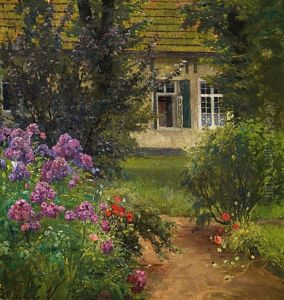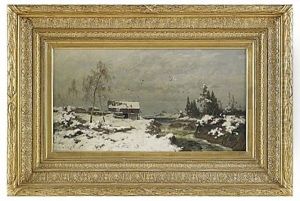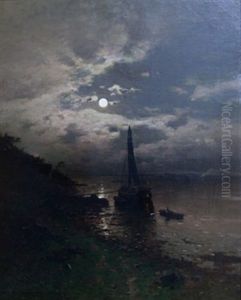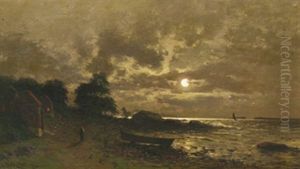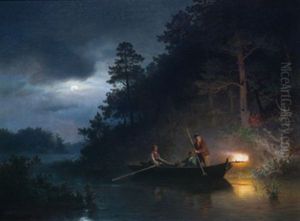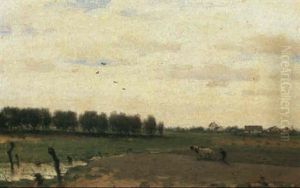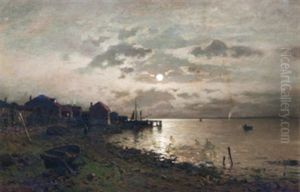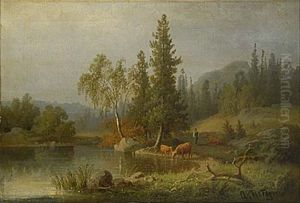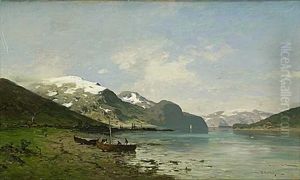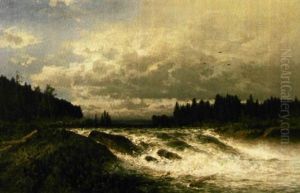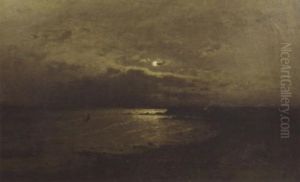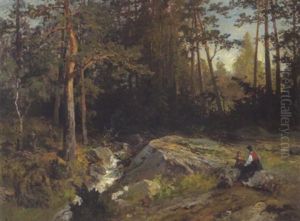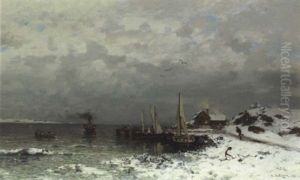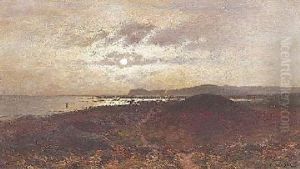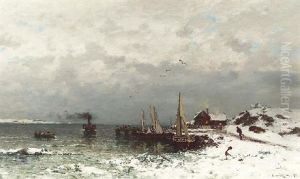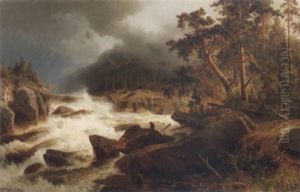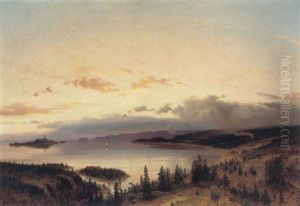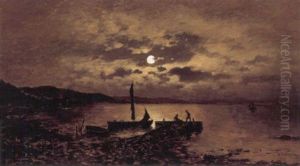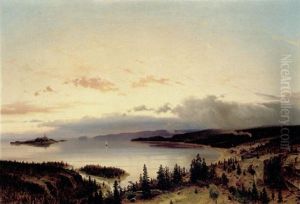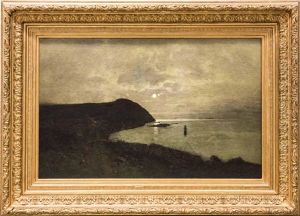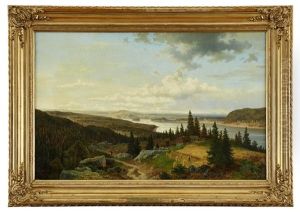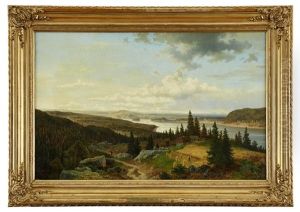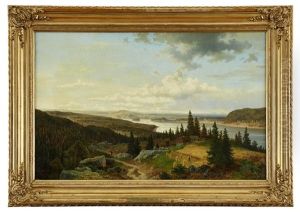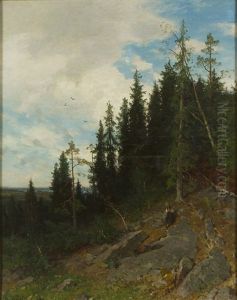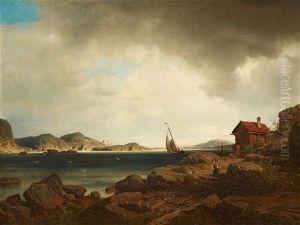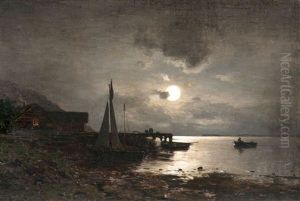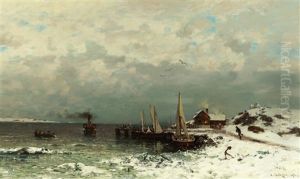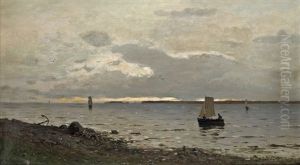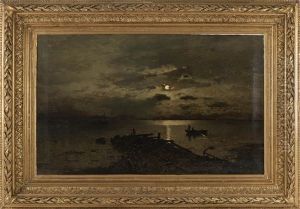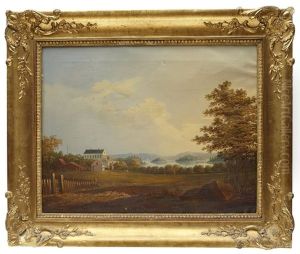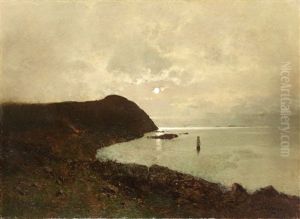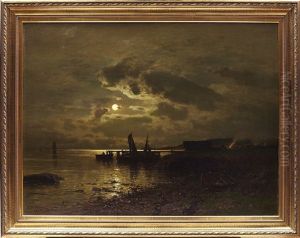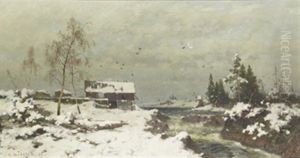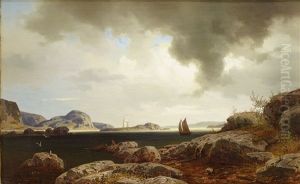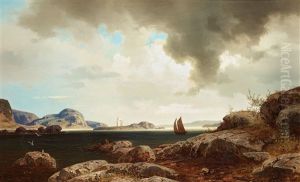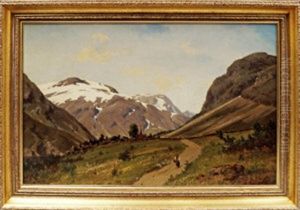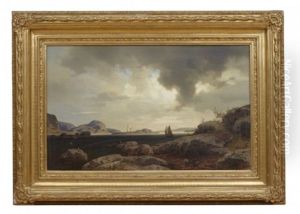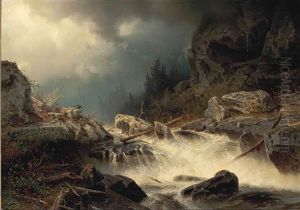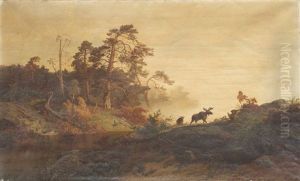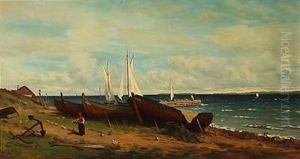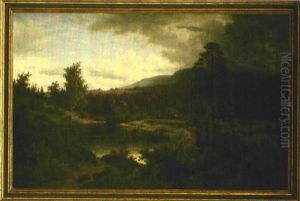Axel Wilhelm Nordgren Paintings
Axel Wilhelm Nordgren was a Swedish painter born on April 7, 1828, in Karlskrona, Sweden. He demonstrated artistic talent from an early age and went on to study at the Royal Swedish Academy of Arts in Stockholm. His early work consisted mainly of genre paintings and portraits, which were well received in Sweden.
In 1851, Nordgren traveled to Düsseldorf, Germany, which was then a vibrant center for the arts. He became associated with the Düsseldorf school of painting, a group known for its detailed and meticulous style, particularly in historical and genre scenes. During his time in Düsseldorf, Nordgren's style evolved, and he began to produce works that were more romantic and atmospheric, a shift that was influenced by his exposure to the work of other artists in the region.
Nordgren's travels took him to Italy in the late 1850s, where he was particularly inspired by the Italian landscape and light. This period was marked by a number of landscape paintings that captured the unique ambiance of the Italian countryside. His work from this time reflects an interest in naturalism and an ability to convey the mood of a scene through careful attention to light and color.
In 1863, Nordgren moved to Paris, which was then the epicenter of the art world. Here, he was exposed to new artistic movements and styles, which further influenced his work. He continued to paint genre scenes, landscapes, and portraits, but with a looser brushwork and a brighter palette, indicative of the emerging Impressionist style. However, Nordgren never fully embraced Impressionism, and his work remained rooted in the academic traditions he had learned in Sweden and Germany.
Nordgren enjoyed success as an artist during his lifetime, exhibiting his work in Paris, Stockholm, and other European cities. His paintings were appreciated for their poetic qualities and their ability to evoke emotion. Nordgren passed away on June 28, 1888, in Paris, France. Today, his works can be found in various museums and collections, and he is remembered as an important figure in 19th-century Swedish art, having contributed to the bridge between traditional academic painting and the modern styles that were to emerge at the end of the century.
